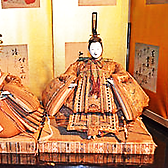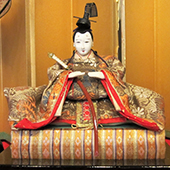Early Hinamatsuri Dolls
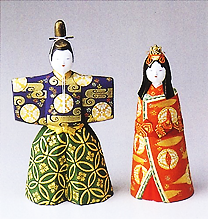
Tachi-Bina
The first dolls were standing dolls, or tachi-bina. This type of doll predates the Edo Period (1603-1868 CE), but were adopted for the earliest Hinamatsuri observances. They featured tubular bodies made from paper or wood, and were often painted or wrapped with textiles. Symbols of long life, such as pine trees and cranes, added to the dolls’ visual appeal. The simple forms related to their origins as hina-nagashi, or throwing away dolls. Paper dolls were tied to straw boats and floated down river to send away bad luck.
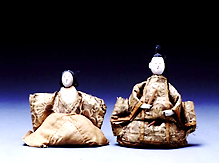
Kanei-Bina
The oldest form of sitting doll is the Kanei-bina style. These dolls appeared early in the Edo Period, during the Kanei Era (1624-1644 CE). Their construction was more intricate than the earlier paper dolls, highlighting the growing importance of Hinamatsuri. In addition to a more realistic body, more attention was given to the dress. Textiles were usually executed in shuchin, a silk-satin weave embroidered with gold and silver thread.
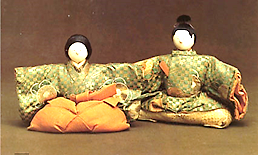
Muromachi-Bina
Muromachi-bina style dolls introduced more realistic hair. Silk hair allowed doll-makers to depict a greater range of hairstyles. Though the dolls were produced in the Edo Period, they emulated the historical hairstyles, clothing, and fashions of the earlier Muromachi Period (1336-1568 CE).
